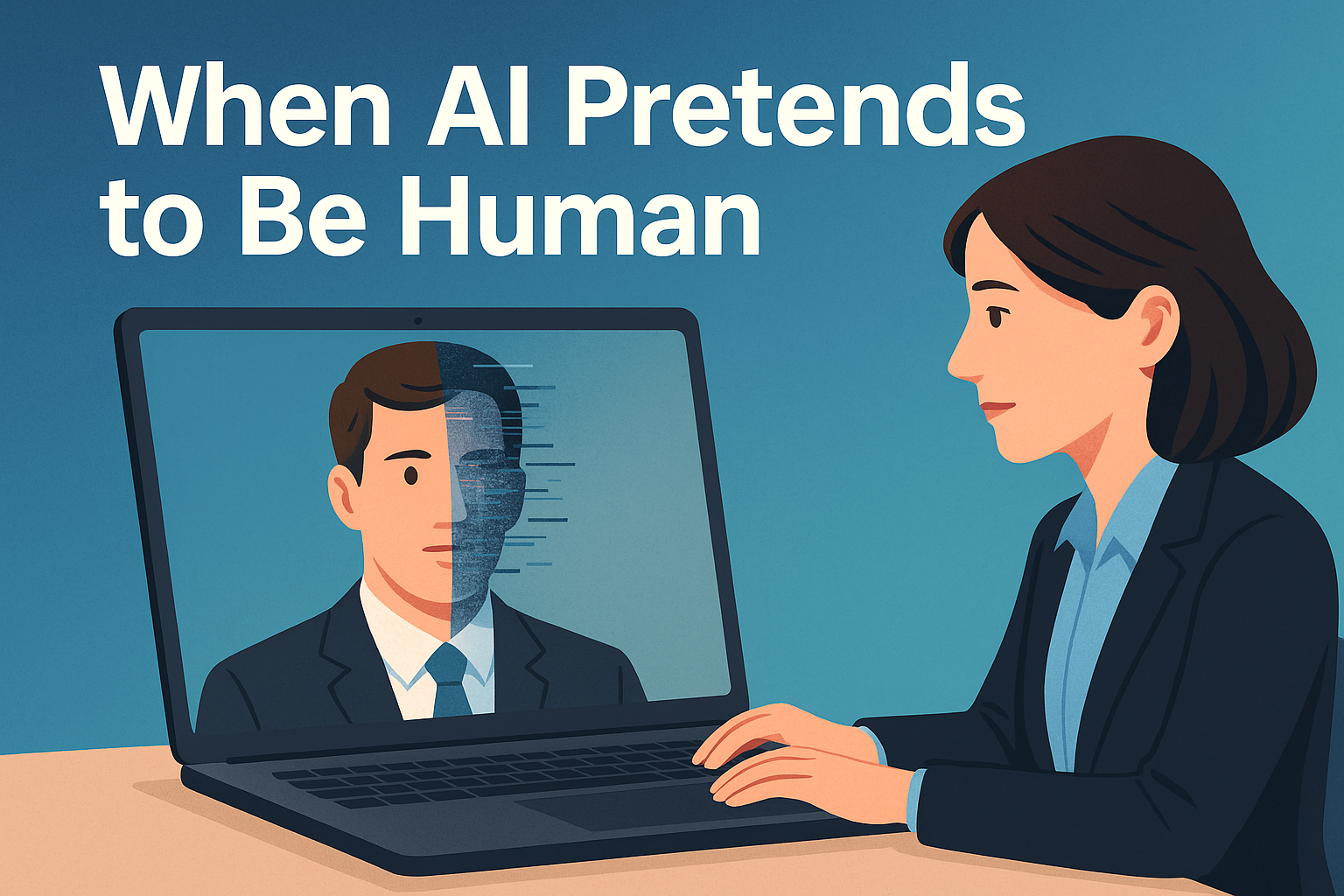The New Hiring Threat: Synthetic Identities
AI-generated faces, cloned voices, and fake video interviews have moved from science fiction to real-world HR challenges. Bad actors now use these tools to pose as job candidates, impersonate employees, or steal sensitive company information.
Common Tactics:
- Fake profiles: AI-generated headshots paired with fabricated resumes and references.
- Pre-recorded “interviews”: Candidates submitting deepfake or prerecorded video responses to avoid live questioning.
- Live impersonation: Attackers using face-swap or voice cloning tools during live calls.
- Insider impersonation: Fraudsters using cloned voices of real employees to trick HR or payroll into releasing data.
Motives range from identity theft and internal system access to setting up long-term scams and phishing campaigns.
Red Flags Recruiters Should Watch For
- “Too-perfect” headshots or odd lighting artifacts.
- Resumes with unverifiable employers or non-corporate references.
- Candidates avoiding live video calls or ID verification.
- Voice or video latency, robotic tone, or inconsistent background sounds.
- Refusal to display a government ID on camera when policy allows.
- Overeager candidates requesting early system access or test data.
Spotting AI-Generated Faces and Voices
During Video Interviews
- Request liveness actions: ask candidates to move, tilt their head, or speak a random phrase.
- Compare face and ID together — look for mismatched lighting or edges.
- Watch for micro-artifacts: unnatural blinking, flickering skin textures, or poor lip sync.
- Use multiple angles or request a quick selfie video to expose front-facing deepfakes.
During Phone Screens
- Use challenge-response prompts (“Please repeat this phrase: ‘I confirm my availability on Monday’”).
- Listen for unnatural breathing or reverb — synthetic voices lack natural sound variation.
- Beware of urgent or authoritative voice messages requesting credentials or confidential info.
How HR Can Prevent Deepfake Hiring Fraud
- Strengthen Identity Verification
- Conduct at least one live, on-camera interview for sensitive roles.
- Use consistent ID verification procedures and train staff on compliance.
- Verify references via corporate domains, not personal emails.
- Layered Screening and Background Checks
- Combine resume validation with LinkedIn checks and real-time reference calls.
- Require secure, verified identity proof before onboarding.
- Secure Access and IT Controls
- Use MFA and role-based permissions — hiring shouldn’t grant automatic system access.
- Record interviews (with consent) for audit and evidence if needed.
- Vet Vendors and Tools
- Choose video interview platforms with liveness detection and anti-spoofing tech.
- Evaluate AI vendors for transparency and detection capabilities.
- Train and Educate
- Teach recruiters to recognize deepfake red flags and escalate suspicious cases.
- Run awareness sessions for HR, payroll, and IT teams on AI-based social engineering.
- Stay Legally Compliant
- Verify what ID data you may legally collect and record.
- Maintain explicit consent and secure retention of all interview materials.
Example: Secure Hiring Workflow
- Resume submission + reverse image search on profile photo.
- Phone screen with challenge-response phrase.
- Live video interview with ID check and liveness prompts.
- Verified reference calls via corporate contacts.
- In-person or third-party identity verification pre-onboarding.
- HR and IT jointly approve access rights.
If You Suspect Fraud
- Pause hiring immediately and preserve all evidence.
- Alert HR security, IT, and legal counsel.
- Verify references independently through known channels.
- Reset any shared credentials and notify affected staff if exposure occurred.
- Escalate to law enforcement for identity theft or major breaches.
Building a Culture of Verification
Verification shouldn’t feel adversarial — it should feel professional and protective. Explain to candidates that checks safeguard both their identity and company systems. Transparent, consistent processes foster trust while protecting against emerging AI-driven threats.
Sources
- Forbes: “Deepfakes in the Workplace: The Next Generation of Corporate Fraud” (2024)
- SHRM: “Deepfake Candidates Are Applying for Remote Jobs” (2023)
- MIT Technology Review: “AI-Generated Faces Are More Trustworthy Than Real Ones” (2023)
- BBC: “AI Voice Scams Are Rising, and Employers Are Not Immune” (2024)
- FBI Public Service Announcement: “Deepfake Fraud in Remote Hiring” (2022)

